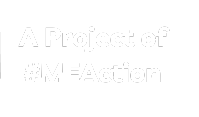African trypanosomiasis
African trypanosomiasis or Human African trypanosomiasis or HAT or Sleeping Sickness is a neurological disease caused by a parasite transmitted by the tsetse fly, and is only found in Sub-Saharan Africa.[1] African trypanosomiasis is caused by the trypanosoma brucei parasite, and control effects reduced cases to around 2,000 per year by 2019.[1] A related parasite causes American trypanosomiasis, alternatively known as Chagas disease.[2]
The most common form of African trypanosomia may not have major symptoms for many months or years, but symptoms emerge once the disease is advanced and cause central nervous system signs and symptoms.[3]
Signs and symptoms[edit | edit source]
African trypanosomiasis is fatal without treatment.[1]
=First stage[edit | edit source]
The trypanosomes (parasites) multiply in subcutaneous tissues, blood and lymph. Symptoms include:
=Second stage[edit | edit source]
The parasites cross the blood-brain barrier (BBB) and infect the central nervous system, this is known as the neurological or meningo-encephalic stage.
Symptoms become more obvious:
- changes in behavior
- confusion
- sensory disturbances
- poor coordination
- disturbed sleep cycle
- Fatal if left untreated[3]
Treatment[edit | edit source]
There are two forms of African trypanosomiasis, and treatment depends on which form is presented. Drugs used for African trypanosomiasis are:
- Pentamidine, an antifungal medication also used for pneumocystis jirovecii pneumonia; this drug is available in the United States.[4] Brand names include Nebupent and Pentam
- Fexinidazole
- Eflornithine
- Melarsoprol
- Nifurtimox, which may be used together with eflornithine and is sold under the brand name Lampit.
- Suramin[1][2]
Suramin[edit | edit source]
Suramin is not available commercially, but has been identified as a potential medication to treat ME/CFS by research at the Open Medicine Foundation.[5]
ME/CFS[edit | edit source]
African trypanosomiasis is not known to occur with or be linked to the development of ME/CFS.[5]
See also[edit | edit source]
Learn more[edit | edit source]
- African trypanosomiasis - CDC
- Deep Dive Into The Science On ME - Open Medicine Foundation
- Trypanosomiasis - drugs.com
- Trypanosomiasis, human African (sleeping sickness) - World Health Organization
References[edit | edit source]
- ↑ 1.0 1.1 1.2 1.3 Centers for Disease Control (March 9, 2020). "African Trypanosomiasis". Centers for Disease Control and Prevention. Retrieved September 26, 2020.
- ↑ 2.0 2.1 "List of 8 Trypanosomiasis Medications Compared". Drugs.com. Retrieved January 5, 2022.
- ↑ 3.0 3.1 3.2 World Health Organization. "Trypanosomiasis, human African (sleeping sickness)". Retrieved January 5, 2022.
- ↑ "Pentamidine Uses, Side Effects & Warnings". Drugs.com. Retrieved January 5, 2022.
- ↑ 5.0 5.1 Open Medicine Foundation (September 5, 2017). "Deep Dive Into The Science On ME". Open Medicine Foundation. Retrieved April 30, 2019.

